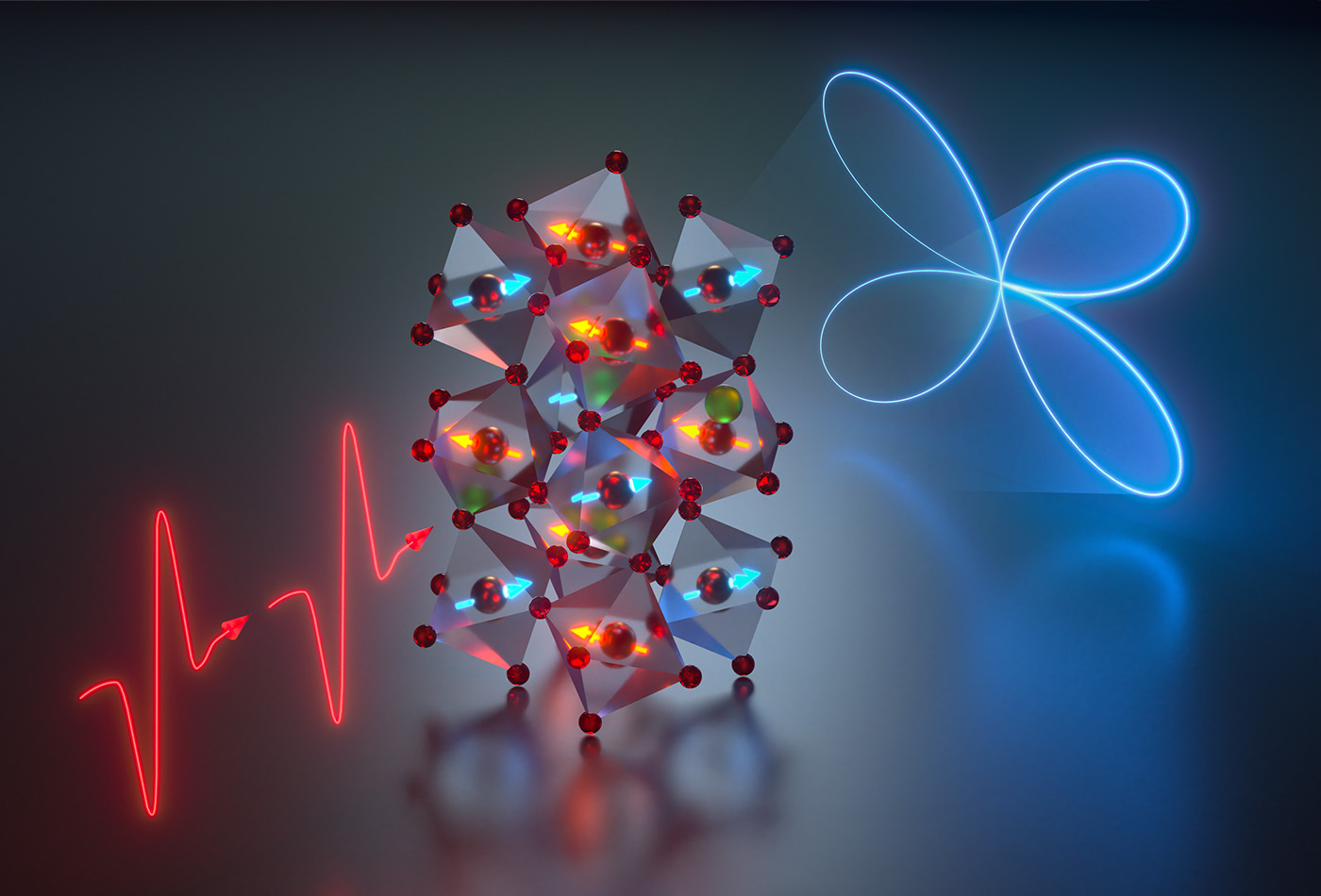Researchers discover new channels to excite magnetic waves with terahertz light
Discovery provides new insights into the ultrafast control of magnetic materials, with potential to enable next-generation information processing technologies.
Plucking a guitar string is a simple action that generates a harmonic series of overtones. However, skilled guitar players can elevate their performance by applying pressure to the strings while plucking them. This subtle technique causes the pitch of the note to bend—rising or falling with each deft movement—and infuses the music with expressiveness, texture, and character by intentionally harnessing the “nonlinear effects” of guitar strings.
In a study published today in Nature Physics, researchers from MIT and the University of Texas at Austin draw a fascinating scientific parallel to this musical artistry. The paper, authored by MIT graduate student Zhuquan Zhang, University of Texas at Austin Postdoc Frank Gao (MIT PhD ‘22), MIT’s Haslam and Dewey Professor of Chemistry Keith Nelson, and Edoardo Baldini, an Assistant Professor of Physics at the University of Texas at Austin, demonstrates the ability to control the dancing patterns of tiny magnetic bits, often referred to as “spin waves” or “magnons,” in a nonlinear manner, akin to how skilled guitar players manipulate guitar strings.
To do this, the researchers used intense terahertz (THz) fields—specially designed laser pulses operating at extreme infrared frequencies—to resonantly launch a spin wave at its characteristic frequency. But instead of simply exciting one spin wave, as one would normally expect – another distinct spin wave with a higher frequency was also excited. “This really surprised us. It meant that we could nonlinearly control the energy flow within these magnetic systems,” said Zhang.
To identify these nonlinear excitation pathways, the researchers developed a sophisticated spectrometer to uncover the mutual coupling between distinct spin waves and reveal their underlying symmetries. “Unlike visible light that can be easily seen by the eye, THz light is challenging to detect.” Gao explained, “These experiments would be otherwise impossible without the technique development which allowed us to measure THz signals with only a single light pulse.”
The team’s work provides new insights into how light can interact with spins in an unconventional way. Since the collective dancing motions of these minuscule magnetic bits and their propagation consume significantly less energy than electrical charges, they have attracted much fanfare from scientists for their potential to revolutionize computing. This discovery provides a tool that brings us ever closer to a future of high-speed spin-based information processing, enabling applications like magnonic transistors and quantum computing devices.
Other authors on the paper include Yu-Che Chien, a former chemistry undergraduate; Zi-Jie Liu and Eric R. Sung, two current chemistry graduate students; Alexander von Hoegen, a postdoc from the Department of Physics; Dr. Jonathan B. Curtis and Prof. Prineha Narang from UCLA; and Dr. Xiaoxuan Ma, Prof. Wei Ren, and Prof. Shixun Cao from Shanghai University.
This work was primarily supported by the United States Department of Energy, Office of Basic Energy Sciences (award no. DE-SC0019126), the Robert A. Welch Foundation (award F-2092-20220331) and the United States Army Research Office (award W911NF-23-1-0394).





